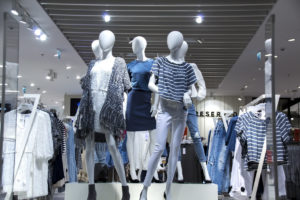 The end of the holiday gift buying season ushers in the inevitable holiday gift return season. Clothes that don’t fit, ugly holiday sweaters no one really wanted, toys that were too old for a young child or too young for the older child all lead to returns, exchanges, and refunds. For those who have been in retail for any length of time, we know that many of these items will be returned without tags or a receipt and not even a gift receipt. It also means people will try to return merchandise to your store that was never even purchased there, despite what the customer in front of you says. This means it is prime time for those who engage in return fraud. There are so many people making returns that trying to separate legitimate refunds and exchanges from the fraudulent ones is difficult. There are steps you can take to minimize the number of fraudulent returns you accept.
The end of the holiday gift buying season ushers in the inevitable holiday gift return season. Clothes that don’t fit, ugly holiday sweaters no one really wanted, toys that were too old for a young child or too young for the older child all lead to returns, exchanges, and refunds. For those who have been in retail for any length of time, we know that many of these items will be returned without tags or a receipt and not even a gift receipt. It also means people will try to return merchandise to your store that was never even purchased there, despite what the customer in front of you says. This means it is prime time for those who engage in return fraud. There are so many people making returns that trying to separate legitimate refunds and exchanges from the fraudulent ones is difficult. There are steps you can take to minimize the number of fraudulent returns you accept.
- Ensure you have your store return policy clearly posted at the points of sale all year round but make it especially prominent during November and December.
- Encourage cashiers to remind customers of the store return policy at the time of purchase. If there is a time limit to how long a customer has to refund an item that should be stated.
- While some stores have gone to print as well as emailed receipts if your store has instituted this recommend that patrons use BOTH options. This means that even if a receipt is lost it should still be in their email.
- Open packages to see what is inside even when shrink-wrapped. The really good criminals will know how to seal a rock inside a box to make it look normal.
- Require a government-issued I.D. card with no-receipt refunds. It may sound extreme but those persons who engage in fraud are less likely to do so if they have to produce a picture ID.
- For no-receipt refunds require an exchange for a like item. Criminals have gotten to the point where they are willing to accept in-store credits what they don’t want is the merchandise. Exchanging for a like item defeats their purpose.
- Be ready for the returns. If possible have one return line for receipted returns get customers through more quickly. Have a second line for no receipt refunds/exchanges that may take more time to process. You will make life easier for the customers with receipts and you give cashiers the opportunity to be more thorough with no receipt returns without feeling pressured to hurry through the transactions.
- Don’t leave a regular employee alone with a line of customers, have a manager at the return desk or register too. Most customers will be understanding of wait times and return policies but some won’t be and hourly employees shouldn’t have to put up with the added stress caused by upset “no-receipt” returners. Fraudulent returners also look for employees who appear to be young or relatively new. Having a manager up front can discourage some of these people.
Being aware in advance that fraudulent returns will be attempted helps prepare managers for the situations when they arise.
It should also be pointed out that gifts are not the only items that will be returned fraudulently after the holidays. A lesser-known practice called wardrobing will also be conducted by dishonest customers. Store owners should be aware that these will be the Christmas or New Year’s Eve partygoers that don’t want to rent an outfit or buy it outright. The problem with this group is they are returning their merchandise with the tags intact and with a proper receipt. Unless they are returning the items outside of a specified policy it can be very hard to put a stop to this activity. An example might be if a store has a 30-day return policy and a customer attempts a return on day 31. This would be a clear reason to turn down the refund. The only sure way to prevent this fraud is for a store to use devices known as wardrobing tags on clothes to keep it from occurring. Loss Prevention Systems Inc. can provide more information on this type of fraud for store owners or managers interested in deterring the activity.
Not all no-receipt refunds during the holidays are fraudulent but a significant number are and it hurts a store’s profit margin. Make preparations now and put control measures in place that will make it hard for criminals attempting to cheat your business.
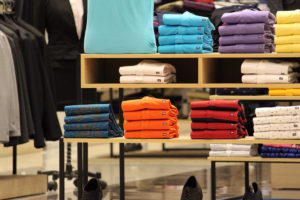 December is the month when retailers are focused on driving those end of the year sales. We push as much merchandise as possible out of the stockrooms to fill the floors. Empty salesfloor spaces should be “no-no’s” during this time of the year. We re-merchandise our fixtures to get gift ideas in front of our customers. We also take steps to increase impulse buys by filling check lanes with snacks, batteries, magazines, gift cards, etc. Managers should also be looking at last year sales information to plan schedules around peak times of the day in order to avoid long lines at the registers. While all of this is important it is just as important to start planning for your end of the year wrap up.
December is the month when retailers are focused on driving those end of the year sales. We push as much merchandise as possible out of the stockrooms to fill the floors. Empty salesfloor spaces should be “no-no’s” during this time of the year. We re-merchandise our fixtures to get gift ideas in front of our customers. We also take steps to increase impulse buys by filling check lanes with snacks, batteries, magazines, gift cards, etc. Managers should also be looking at last year sales information to plan schedules around peak times of the day in order to avoid long lines at the registers. While all of this is important it is just as important to start planning for your end of the year wrap up. A New Year is just around the corner and once again resolutions are going to be made and many of those will fall by the wayside. Why does that happen? Are goals too big to achieve? Sometimes we all start off with good intentions and we just get caught up in our normal routines and we can’t seem to focus on what it was we wanted to get done. There may be a manager out there who resolves that this is the year they will meet quarterly with each employee and discuss performance. They might do well the first quarter but then as the demands of the job take up more and more time something gives and it was the meetings. I recall one of my resolutions was to be more organized at work. I had a filing system, it was called my desktop and I knew where everything was at. I would make my resolution, create a filing system and you guessed it by the end of January I was back to my old habits. My intentions were good I just wouldn’t stay focused on it and made excuses.
A New Year is just around the corner and once again resolutions are going to be made and many of those will fall by the wayside. Why does that happen? Are goals too big to achieve? Sometimes we all start off with good intentions and we just get caught up in our normal routines and we can’t seem to focus on what it was we wanted to get done. There may be a manager out there who resolves that this is the year they will meet quarterly with each employee and discuss performance. They might do well the first quarter but then as the demands of the job take up more and more time something gives and it was the meetings. I recall one of my resolutions was to be more organized at work. I had a filing system, it was called my desktop and I knew where everything was at. I would make my resolution, create a filing system and you guessed it by the end of January I was back to my old habits. My intentions were good I just wouldn’t stay focused on it and made excuses.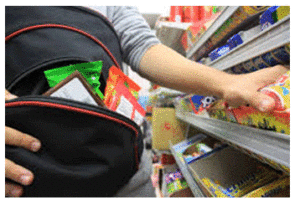 As a manager of a retail shop, the layout of the store is probably out of your hands and there is nothing to do about it.
As a manager of a retail shop, the layout of the store is probably out of your hands and there is nothing to do about it.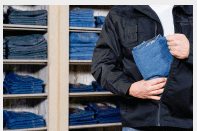 Kleptomania is a mental disorder. Not as serious as a more severe case of schizophrenia for example, but a mental disorder nonetheless. The inability of people suffering from this disorder to stop themselves from grabbing merchandise and stealing it is a problem mental health professionals try to understand and help these sufferers find a way to overcome.
Kleptomania is a mental disorder. Not as serious as a more severe case of schizophrenia for example, but a mental disorder nonetheless. The inability of people suffering from this disorder to stop themselves from grabbing merchandise and stealing it is a problem mental health professionals try to understand and help these sufferers find a way to overcome. As the biggest shopping season of the year seems inevitable close, retailers across the world prepare themselves to not only have a great holiday season but a profitable one.
As the biggest shopping season of the year seems inevitable close, retailers across the world prepare themselves to not only have a great holiday season but a profitable one.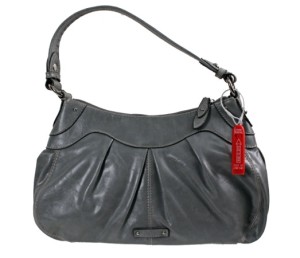 When we think of gift boxes and wraps during this time of the year we would probably think of robe boxes, shirt boxes or jewelry boxes. Wraps would bring to mind those colorful papers and foils that we use to hide the boxes and try to camouflage the gifts inside. Then there are the ribbons that tie everything together and make the packages beautiful. The whole purpose is to protect the items we have purchased from prying eyes and snoops.
When we think of gift boxes and wraps during this time of the year we would probably think of robe boxes, shirt boxes or jewelry boxes. Wraps would bring to mind those colorful papers and foils that we use to hide the boxes and try to camouflage the gifts inside. Then there are the ribbons that tie everything together and make the packages beautiful. The whole purpose is to protect the items we have purchased from prying eyes and snoops. “Dashing through the snow in a one-horse open sleigh…” OH BOY, this is one of my favorite times of the year! Christmas time and the other holidays just make it special for me. The television specials, the music, the foods and treats and the decorations all combine to just give a warm feeling. I even feel like people tend to be friendlier and more helpful to each other. Then there is the shopping to do, going out to window shop or find that perfect gift for someone(s) special in our lives. Living in the South we don’t often get to dash through the snow but when you live up in the northern states you can add the winter frolicking to your holidays. Even if we haven’t experienced it almost all of us have seen pictures or movies with reindeer dashing through the snow pulling Santa’s sleigh. There’s something about it that evokes a bit of childhood magic.
“Dashing through the snow in a one-horse open sleigh…” OH BOY, this is one of my favorite times of the year! Christmas time and the other holidays just make it special for me. The television specials, the music, the foods and treats and the decorations all combine to just give a warm feeling. I even feel like people tend to be friendlier and more helpful to each other. Then there is the shopping to do, going out to window shop or find that perfect gift for someone(s) special in our lives. Living in the South we don’t often get to dash through the snow but when you live up in the northern states you can add the winter frolicking to your holidays. Even if we haven’t experienced it almost all of us have seen pictures or movies with reindeer dashing through the snow pulling Santa’s sleigh. There’s something about it that evokes a bit of childhood magic. It might be too early for retailers to prepare for the holiday season, but it is never too early to implement security measures to prevent shoplifting in their stores. The holiday season attracts more customers than at any other time of the year, therefore shoplifting incidents increase with the increase of customers as well.
It might be too early for retailers to prepare for the holiday season, but it is never too early to implement security measures to prevent shoplifting in their stores. The holiday season attracts more customers than at any other time of the year, therefore shoplifting incidents increase with the increase of customers as well.